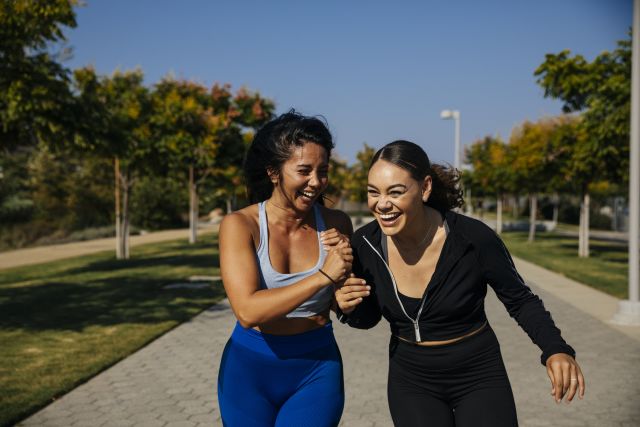Updated on March 18, 2024.
Did you know that regular physical activity for 20 minutes daily may be enough to make a difference in your heart? That's 20 minutes of sustained activity that leads to being slightly out of breath, or enough for you to sweat consistently during that time.
You could cut your risk of heart disease as much as 30 to 50 percent by walking regularly or doing another form of moderate-effort exercise.
Getting active
If you're ready to get moving (check with your healthcare provider first, especially if you have a medical condition or have never exercised), here are some tips on how you can ease into a heart-healthy exercise routine.
1. Keep it simple
Keep it simple with exercise that you're likely to continue. One example is walking just a few extra minutes a day, which can help lower your "bad" (LDL) cholesterol (a fat-like substance in the blood), raise your "good" (HDL) cholesterol, and decrease inflammation. And besides keeping your heart in shape, walking has among the highest compliance rates of any exercise, which means there's a good chance you'll continue doing it. The goal is to eventually do 30 minutes of physical activity each day, but if you can't remain active for this time period all at once, break up the half-hour span into shorter, more frequent sessions as you are able.
2. Look for exercise opportunities
Your day may have many exercise opportunities that are not so obvious. Throughout your day, you can look for opportunities for getting active. Need to talk on the phone? Move your body while you do it. Waiting in line? Do some isometric exercises, like tensing and relaxing your buttox muscles. Even household chore can be turned into a great workout.
3. Go for balance
It's important to build both stamina and muscle by doing aerobic exercises that stregthen the heart -- the kind that make you breathe a little harder and get your heart rate up, like brsik walking—but also doing strength-building exercise like situps or pushups. Also remember to finish your exercuse routine with some stretching.
4. Find enjoyable activities
If you don't enjoy what you're doing, the chance that you will continue doing it over the long term may be low. Look for activities that you enjoy, whether it's dancing in your living room, tending a vegetable garden, or walking with a loved one each morning. And when an activity starts feeling old, try something new. Mixing it up can help your body become healthier.
Bottom line: It may be easier than you think to get the exercise you need in order to reduce your heart-disease risk factors. An added benefit is that you'll be lowering your odds of other health conditions, such as stroke, cancer and diabetes, at the same time.






